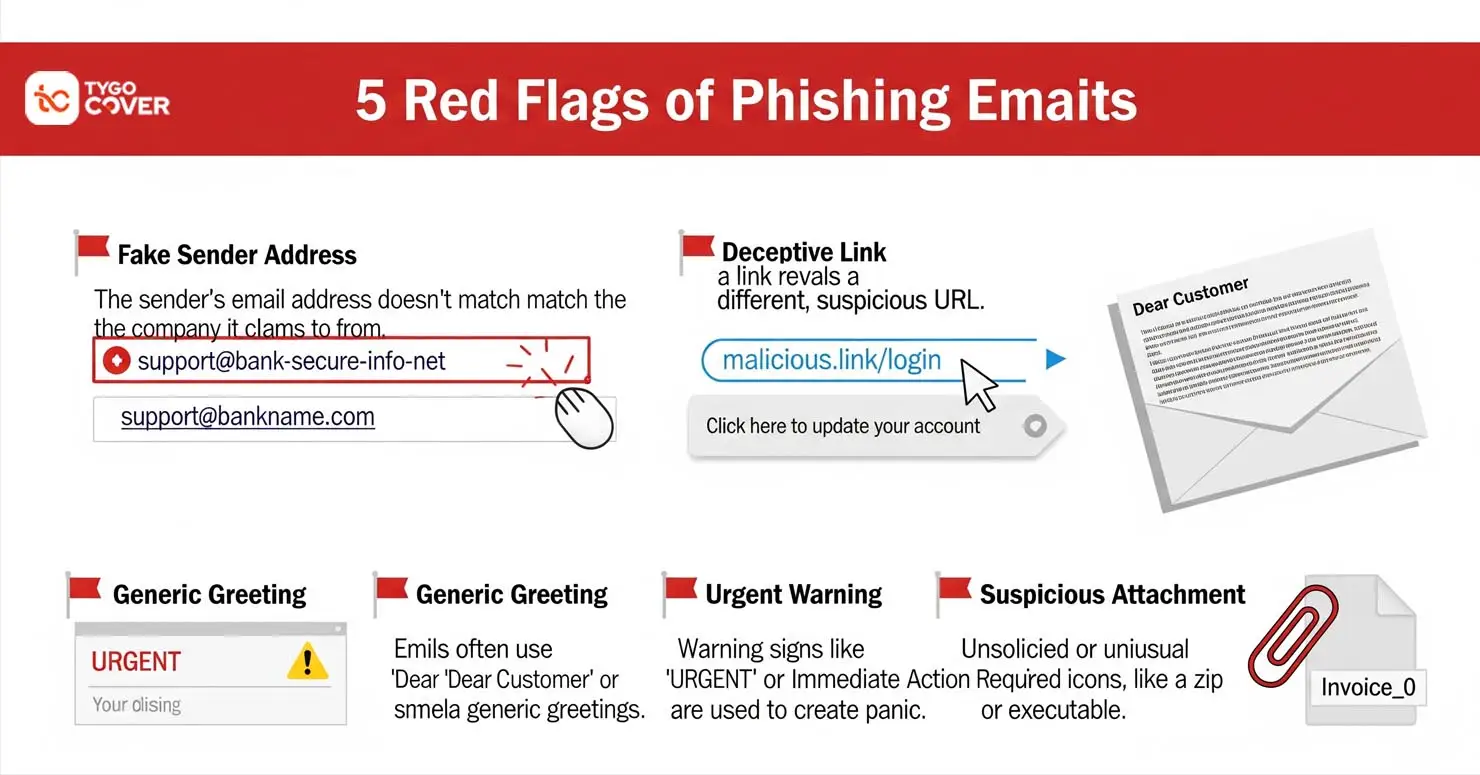What is phishing? It’s a question more people are asking as digital scams become more sophisticated. At its core, phishing is a high-tech version of a very old con game.
It’s when an attacker pretends to be someone (or something) you trust like your bank, Netflix, your internet provider, or even your boss to trick you into giving them your sensitive information.
They are “fishing” for your data, but they use a “ph” because it’s a tech-based lure. Their goal is simple but devastating: to steal your passwords, credit card numbers, or personal identity. It’s one of the most common threats on the internet today, but the good news is that with a little knowledge, you can spot almost all of them.
How Does a Phishing Scam Actually Work?
To stop a scam, you need to know how it operates. Most phishing examples follow the same three-step playbook:
-
- The Lure (Building Trust & Urgency): You receive a message. It looks legitimate. It uses the right logos, the right colors, and professional language. But the key ingredient is urgency. It wants you to panic.
- The Hook (The Call to Action): The message demands you take immediate action. “Your account has been suspended,” “Suspicious login detected,” or “Action required: Package undeliverable.” It tells you to click a link or open an attachment right now to fix the problem.
- The Catch (Stealing Your Data): The link takes you to a fake website that looks identical to the real one (e.g., a perfect copy of the PayPal login page). When you type in your username and password, you aren’t logging in; you’re sending your credentials directly to the scammer’s database.
Beyond Email: The Different Types of Phishing
Phishing isn’t just about emails anymore. Scammers have moved to every platform we use.
- Smishing (SMS Phishing): This is phishing via text message. You might get a text saying, “USPS: We cannot deliver your package due to an incomplete address. Click here to update.” It’s short, urgent, and very effective because we trust text messages more than emails.
- Vishing (Voice Phishing): This is when a scammer calls you on the phone, often pretending to be from “Microsoft Tech Support” or the IRS, trying to scare you into giving them remote access to your computer or your credit card details.
- Spear Phishing (Targeted Attacks): This is the dangerous one. Instead of sending a generic email to thousands of people, the attacker researches you specifically. They might use your real name, your job title, or mention a recent event you posted about on social media to make the email seem incredibly real.
How to Recognize Phishing (The 5 Red Flags)
You don’t need to be a tech expert to spot a phishing email scam. You just need to pause and look for these five common red flags:
-
- Check the Sender’s Actual Email Address: This is the #1 giveaway. A real email from PayPal will come from
@paypal.com. A scam might come frompaypal-support-team@gmail.comorservice@paypa1.com(notice the number ‘1’ instead of ‘l’). Always tap or click the sender’s name to see the real address hidden behind it. - Hover Over Links (Don’t Click!): On a computer, move your mouse over the link without clicking. A small box will appear showing the actual destination. If the email says it’s from your bank, but the link goes to a weird, random website address, it’s a scam.
- Generic Greetings: Legitimate companies usually know who you are. If an email from your “bank” starts with “Dear Customer” instead of your actual name, be very suspicious.
- High-Pressure Tactics: Scammers rely on fear to make you act without thinking. If a message says “Act within 24 hours or your account will be permanently deleted,” it is almost certainly a trick. Real companies don’t operate like that.
- Unsolicited Attachments: Never open an attachment you weren’t expecting, especially if it has a weird file name (like
invoice_839485.zipor.exe). These often contain malware that can infect your computer instantly.
- Check the Sender’s Actual Email Address: This is the #1 giveaway. A real email from PayPal will come from
Recognizing these signs is a core part of what cybersecurity awareness is all about.

What to Do If You Suspect a Phishing Attack
If your gut tells you something is wrong, listen to it.
- Don’t click any links.
- Don’t download any attachments.
- Don’t reply to the sender.
- DO report it as spam or phishing in your email client.
If you’re genuinely worried about the alert (like a “suspicious activity” warning from your bank), do not use the link in the email. Close it, open your web browser, and type in your bank’s official website address yourself. Log in there. If the alert is real, you will see it in your account’s secure message center.
For more detailed information on current scams, you can always check official resources like the FTC’s guide on phishing.
Frequently Asked Questions (FAQ)
What should I do if I already clicked a link and entered my password?
Don’t panic, but act fast. Immediately go to the real website and change your password. If you use that same password anywhere else (which you shouldn’t!), change it there too. Then, turn on Two-Factor Authentication (2FA) for that account to lock the scammers out.
Can I get hacked just by opening a phishing email?
Usually, just opening the email is safe. The danger comes from clicking links or downloading attachments. However, it’s best practice to delete suspicious emails without opening them if you can tell from the subject line that it’s spam.
What is “Smishing”?
“Smishing” is simply phishing done via SMS (text messages). It uses the same tactics urgency and fake links but delivers them right to your phone’s messaging app, often pretending to be delivery services or banks.